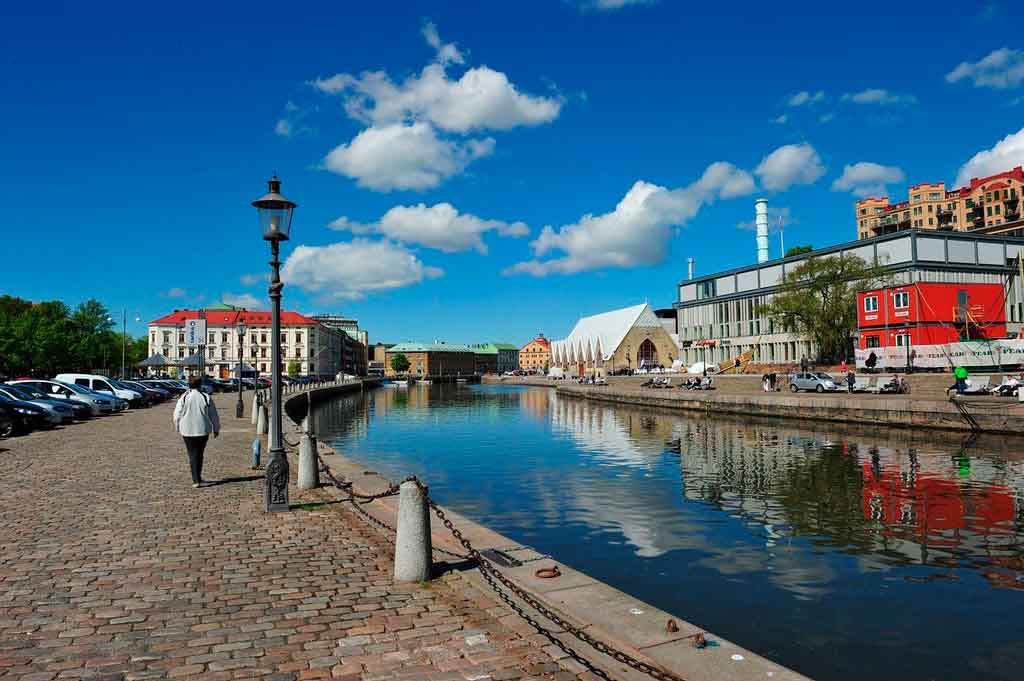In the race against time to keep global temperature rise below the critical 1.5°C limit set by scientists, some cities are standing out in implementing solutions for a more sustainable future, reducing carbon emissions.
This is the conclusion of the latest Global Destination Sustainability Index (GDSI), which evaluates 69 indicators—including recycling rates, air pollution levels, cycling infrastructure, and the percentage of eco-certified hotel rooms—to identify cities playing a crucial role in making the world a better place.
Although the index primarily recognizes the tourism sector for its sustainability efforts, it also considers aspects that directly impact residents’ quality of life. This makes it a valuable tool not only for travelers seeking sustainable destinations but also for those who wish to live in an environmentally responsible city.

Gothenburg, Sweden
Gothenburg leads the Global Destination Sustainability Index, and for good reason. From 2016 to 2021, Sweden’s second-largest city consistently held the top position in the ranking. In 2021, it was recognized by Lonely Planet as the world’s most sustainable city. Additionally, in 2022, it committed to becoming one of the 100 European Union cities to achieve climate neutrality by 2030.
Ninety-five percent of the city’s public transport runs on renewable energy. The airport has received one of the highest certifications from the Airport Carbon Accreditation program for its commitment to tracking, reducing, and offsetting carbon emissions. Moreover, nine out of ten hotel rooms have environmental certification.
The Way Out West music festival became the first in the world to receive sustainability certification in 2013. The festival serves only vegetarian food, uses recycled clothing for merchandise, and avoids disposable plates and cutlery.
Oslo, Norway
Oslo ranks second on the list and is the second of eight Nordic cities to be among the top ten. In 2019, it was also recognized as the European Green Capital.
Despite Norway’s economic dependence on oil and gas, the country continues to receive high sustainability ratings.
A stroll through Oslo reveals this commitment. The city has 270 urban bike stations, 5,000 charging points for electric vehicles, and introduced electric scooters. Additionally, large portions of the municipality consist of forests, with 9% of the area designated as green spaces and municipal parks.
However, many sustainability initiatives operate behind the scenes, as noted by Anne-Signe Fagereng, marketing manager at VisitOSLO. “When you visit our website, you won’t see exaggerated green leaves everywhere or labels declaring everything as ‘sustainable.’ Instead, we try to promote sustainable options as the most recommended.”
The portal highlights establishments such as the Michelin Green Star-awarded restaurant Maaemo, known for its sustainable practices, and the Thon Hotel Astoria, an eco-certified budget hotel that reduces its carbon footprint by using renewable energy.
Fagereng acknowledges the challenges and the reality of air travel. However, she remains optimistic, stating that while tourism is not yet fully sustainable, significant efforts are being made in that direction. She emphasizes that tourism can become a force for good if it follows this path.
Glasgow, Scotland
Glasgow’s very name carries an environmental heritage, originating from the Gaelic word Glaschu, meaning “dear green place.”
Fifteen hundred years after its founding, the Scottish city ranks eighth in the Global Destination Sustainability Index, consistently remaining in the top ten since 2016.
For Kathi Kamleitner, a Vienna native who has lived in Glasgow for ten years, this recognition comes as no surprise.
She notes that the city has made significant strides toward a sustainable future, such as implementing a low-emission zone that restricts vehicle entry into the city center to reduce air pollution.
Additionally, electric vehicle charging stations have been installed, smart LED street lighting has been adopted, and notable efforts have been made to encourage cycling, with bike-sharing systems and new dedicated lanes.
“Sometimes, the execution hasn’t been the best—it felt like they hired someone who doesn’t ride a bike to design the bike lanes,” Kamleitner jokes. “But overall, it’s positive to see more infrastructure like this being developed.”
Glasgow’s reputation as a green city goes beyond its name, boasting over 90 parks that ensure eight out of ten children live within 400 meters of a public green space.
Another standout aspect is the civic attitude, with residents driving circular economy initiatives such as community centers where products are repaired or borrowed.
“I see a lot of social initiatives and businesses genuinely committed to sustainability, making it easier to make more sustainable choices,” Kamleitner observes.
Bordeaux, France
Bordeaux is famous for its stunning architecture and renowned wines, but there’s another reason to admire this French city: its commitment to a sustainable future.
In addition to ranking among the top ten in the GDSI, Bordeaux is listed as the third most highly rated sustainable destination on TripAdvisor.
The city’s sustainability efforts are evident when exploring its streets. In addition to bike-sharing services, Bordeaux offers electric buses, trams, and even river transportation. The city is home to numerous restaurants that prioritize direct sourcing from local producers and second-hand shops.
The city’s famous wine festival, certified as eco-friendly since 2021, has implemented initiatives to reduce its carbon footprint, such as converting food waste into fertilizer, eliminating plastic items, and annually measuring and reporting its emissions.
However, according to Olivier Occelli, director of the Bordeaux Tourism Office, the city aims to go even further. The tourism sector has committed to achieving eco-certification for 80% of its stakeholders, from hotels to travel agencies, by 2026.
“Sustainability is one of the key strategies we must focus on in the coming years,” Occelli states. “We are aware of global warming’s reality, and all economic sectors must contribute to securing our future and that of the planet.”
One idea under discussion is how to reduce the carbon footprint of travel to Bordeaux. Staying only one or two nights in a destination has a greater impact than extending a visit.
“That’s something we need to address,” he says. “If someone comes for a two-day business trip, for example, we need to encourage them to stay three more days to explore the city, visit the vineyards, and use local public transportation.”
Goyang, South Korea
Goyang ranks 14th in the GDSI, making it the first non-European city to appear on the list due to its recent efforts to enhance its environmental credentials.
Since becoming the first South Korean city included in the GDSI in 2017—and the most improved the following year—Goyang has steadily climbed the rankings. In 2022, it earned its first ISO 20121 sustainability certifications.
One of the sectors contributing most to these achievements is conventions and exhibitions, with a center that recycles rainwater for use in restrooms, ponds, and gardens.
Additionally, the city boasts 68 parks and a bike-sharing system. Peter Lee, director of the Goyang Convention & Visitors Bureau, highlights the city’s 1,000 hectares of “green and blue” spaces (referring to parks and waterways) per 100,000 residents, along with its 424 kilometers of cycling paths.
He emphasizes Goyang’s “excellent environmental conditions,” noting the balance between urban and rural areas, as well as environmental policies and concrete measures that stand out as some of the best in South Korea.

